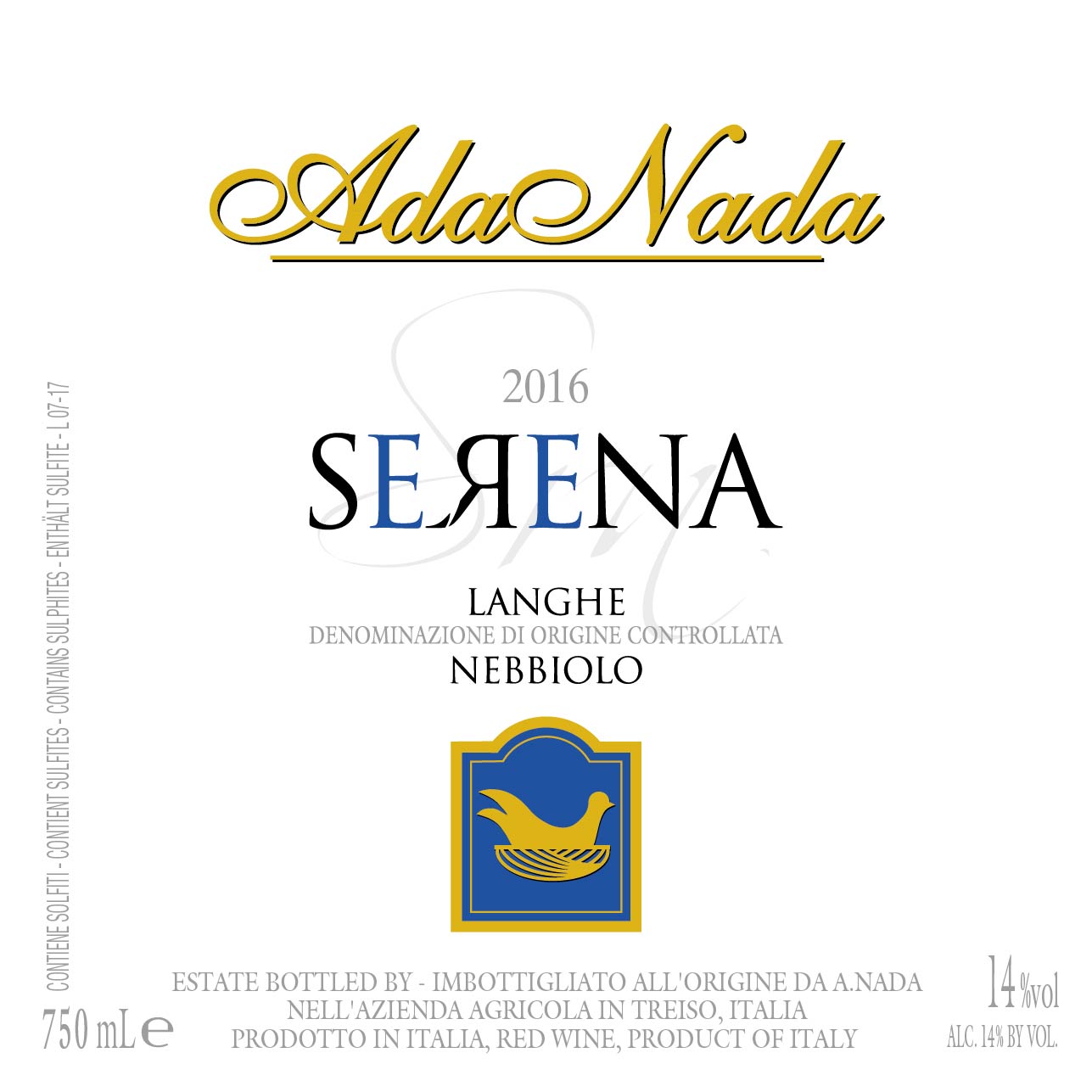
Ada Nada
Wines
Treiso, Barbaresco
Dolcetto d’Alba, “Autinot”
The Dolcetto is planted to south facing slopes and is harvested during the first half of September. The fermentation and aging is done in stainless steel with the cuvaison lasting one week or so. The wine is then exposed to the cold weather so that a natural decanting occurs. Bottling occurs between March and June of the year following harvest and the wine is left to rest in bottle for an additional three months before it reaches the market. Production is approximately 5,000 bottles per annum. The Dolcetto here is marked by deep notes of black cherry and wild berries, a warrior of sorts with a firmly tannic backbone.
Barbera d’Alba, “Pierin”
Planted to southeast facing slopes at 200 to 350 meters altitude on limestone soils composed mostly of white marl with very little clay, the Barbera “Pierin “ blends fruit from two neighboring vineyards and bears the name of the family associate who supplied much of the old vines fruit for this wine. Alcoholic and malolactic fermentations occur while the wine rests in stainless steel, followed by ageing in30-hectoliter casks for one year. The wine is bottled without fining or filtration. Approximately 6,000 bottles are produced per annum. Its character is muscled and exuberant with a rustic shrug of its broad shoulders.
Langhe Nebbiolo, “Serena”
This cuvée is birthed from young vines planted on southwest facing limestone slopes at altitudes between 200 and 350 meters within the confines of Treiso. Vinification occurs in stainless steel tanks for a week or so with gentle pump-overs designed to extract only the finest polyphenols. Malolactic follows a gentle pressing and the wine is then decanted into barriques for a three months. The wine is bottled without filtering or fining. Marked by an orange-red tint to its color, the classic appearance of Nebbiolo, the wine is far from timid, showing a firm backbone of tannins that are a clear indicator of the traditional bent of this multi-generational domaine.
Barbaresco, “Valeirano”
From vines planted in 1971 in the “cru” Valeirano in Treiso situated at 200 to 350 meters altitude, southwest facing on limestone/white marne soils. Manual harvest occurs in middle of October. There is a 12-day maceration in stainless steel and, after the fermentation, the wine is racked into large “botte” (plus several barriques to account for the overflow) and aged for 20–24 months prior to being bottled, unfined and unfiltered. Production averages 10,000 bottles per annum. There is elegance to this Barbaresco alongside the classic, sturdy tannins that frame the spice-driven fruit at the center of this wine’s profile, with woodsy notes, spry acidity and excellent lift on the palate.
Barbaresco, “Rombone, Elisa”
This wine, named for one of the daughters of Anna Lisa and Elvio, is drawn from the oldest vines located in the “cru” Rombone in Treiso. Planted in 1947, this plot of Nebbiolo is found on south facing slopes at 300 meters of altitude with low yields and high levels of concentration. Vinified with a maceration of 10 or so days in stainless steel then raised for 18–20 months in 30-hl barrels. This cuvée has the lift of the Valeirano but with more body and density with profound tannins well enrobed. A particularly age-worthy example of a traditionally structured Barbaresco that bears scant resemblance to the more modern, easier style of many wines of the Langhe today. Production is limited to about 4,000 bottles per year.
Barbaresco Riserva Rombone, "Cichin”
A formidable and quite royal wine from 55 year old south-facing vines in the cru “Cichin”, it is harvested only when the grapes are tending towards super-ripeness. After manual harvesting, the grapes are destemmed and crushed and the maceration extends 15 days. The wine is raised in large oak “botte” for an extended élevage of 36 to as much as 50 months. Only 200 cases are produced annually. This sturdy, somber wine is thick in body, deeply colored with tints of garnet and red; its woodsy nose with notes of truffle and spice announces a grand wine of breed and character that refuses to yield to the modern notion of easy drinkability.







